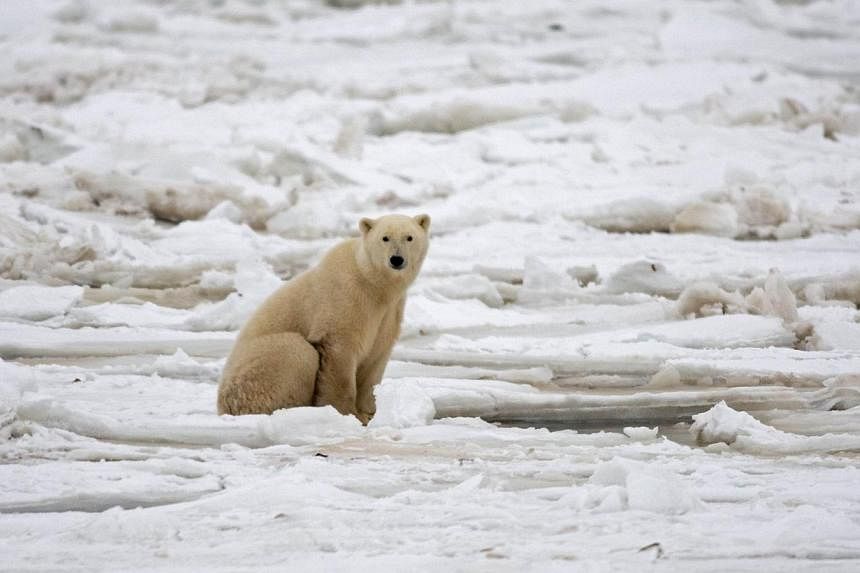Many Singaporeans' experience with polar bears come from seeing Sheba and her family at the Singapore zoo.
Sheba was brought in from Cologne Zoo in Germany in 1978 when she was 14 months old. After mating with a a male brought in from Canada's Winnipeg Zoo, she gave birth to a son, Inuka in 1990.

He was the world's first polar bear to be born in the tropics. Inuka now lives in an $8-million enclosure called the Frozen Tundra, which was modelled on the natural environment of the Arctic, with a large pool, waterfall and an ice cave.
Concerns about the polar bears' well-being became widespread in 2004, when Inuka and Sheba turned green because of the humidity-related algae growth in their fur.
While we see a green polar bear here, worse things are happening to the animals in their natural habitat.
The number of polar bears inhabiting a frozen sea north of Alaska declined by about 40 per cent from 2001 to 2010, researchers and scientists have found.
According to a study released on Nov 17, the polar bear population in 2010 along the northern coast of Alaska in the United States and western Canada was 900.
Polar bears live in the Arctic in areas where they can hunt seals at openings in the sea ice called leads. According to Polar Bears International, the five nations that have polar bears are the US, Canada, Russia, Greenland and Norway.
Here are 5 things to know about the cuddly creatures that were classified as "Threatened Species" by the US in 2008.
1. The weight of adult males is normally 351kg to more than 544kg. Adult females are smaller, normally weighing 150kg to 295kg. The heaviest polar bear ever recorded was a male weighing 920kg.
2. Female polar bears give birth in "maternity dens". After feeding heavily in April or May, females that have mated dig a den in late October or early November mostly along mountain slopes or hills near the shore. They give birth there, and emerge again in March or April. During her time in the den, the mother does not eat, drink or defecate.
3. According to the Polar Bears International, biologists estimate that there are 20,000 to 25,000 polar bears currently.
About 60 per cent of live in Canada. Some Native communities in Canada are reporting an increase in the numbers of polar bears on land.
While traditional hunters believe this means an increase in population, scientists attribute it to polar bears being driven ashore by lack of ice.
4. The Polar Bear Specialists' Group of the International Union for the Conservation of Nature based in Norway lists sea ice losses from a warming Arctic as the biggest threat to polar bear survival.
Nansen Environmental and Remote Sensing Centre, also based in Norway predicted that the the polar ice cap will disappear almost entirely during summer in the next 100 years.
As Artic ice warms and melts, polar bears will have reduced access to food, lower cub survival rates, increase in drowning, increase in cannibalism and a loss of access to denning areas. This may ultimately lead to a declining polar bear population size.
5. The increased temperatures in the Arctic are caused by global warming, which is an increase in temperature in the Earth's atmosphere.
The amount of greenhouse gases, which act like a blanket that keeps the Earth warm, has increased so much that it is like there is a second "blanket".
Scientists say it is not too late to reduce greenhouse gas emissions to save the polar bear's sea ice habitat.
Greenhouses gases are produced through the burning of fossil fuels like oil and coal. It will take decades to reduce the build-up of greenhouse gases but small actions like driving less, and reducing water and electricity usage help.
Sources: Polar Bears International, Polar Bear Specialists' Group of the International Union for the Conservation of Nature

